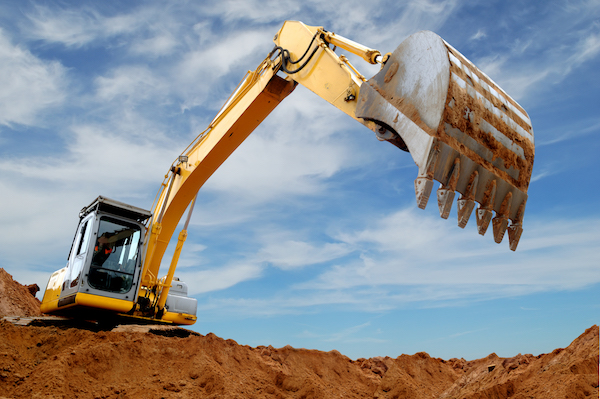Excavating
In the construction world, contractors who do excavating do far more than move dirt. They are responsible for site preparation, trenching, grading, and many other soil-related tasks.
Contracting
Excavation contractors are business owners that are considered subcontractors because the job is often just a part of a larger project. As a contractor, they often work under the direction of a general contractor.
Site preparation
In a typical construction project, the excavating contractor shows up after the surveying is done that determines the boundaries of the project. The contractor removes the soil to the depth required for the new foundation and also ensures that the soil is firm through compaction tests and compaction with the equipment, if necessary. The dig requirements are precise, so the contractor must be able to use a level and transit to match the grade posted by the surveying crew. After the footers and stem wall is poured, the excavation contractor backfills around the new foundation.
Moving dirt
When it comes to moving dirt, its typically up to an excavating contractor. Depending on the equipment used, the contractor can build or grade roads, excavate ditches for water or gas lines, run trenchers that install flexible pipes, and dig ponds and sewers. They can also create terraced drainage on agricultural land and build earthen dams.
Excavating is used in:
Commercial and Concrete:
From site work to underground utilities to fine grading. Footers, foundations, flatwork, parking lots, driveways, and sidewalks are just a few places where an excavating contractor is required.
Industrial excavating:
This type of work includes deep foundation work. This is a type of foundation that transfers building loads to the earth farther down from the surface that a shallow foundation requires. Buildings such as skyscrapers would require a deep foundation.
Other reasons for a deep foundation would be in the case of a very large design load, poor soil at shallow depth, or site constraints like property lines. There’s different terms used to describe different types of deep foundations, including the pile (pole), the pier (column), and drilled shafts (caissons). Piles are generally driven into the ground in situ; other deep foundations are typically put in place using excavation and drilling. Deep foundations can be constructed out of timber, steel, reinforced concrete or pre-stressed concrete.
Heavy equipment operators:
Excavation equipment is expensive to purchase and costly to insure. On average, a small to mid-size excavation contractor will often own or lease a couple of large front-end loaders, bulldozers, backhoes, compactors, trenchers and skid steers. Most excavation contractors also own large dump trucks to haul away excess dirt. College or trade school degrees in heavy equipment operation are few, so most contractors will hire skilled operators or new operators and train them on-the-job. Many excavation contractors are prior heavy equipment operators.
The business side of excavating:
In most states, the contractor must be licensed and bonded. They must also adhere to safe jobsite practices outlined by the Occupational Safety and Hazard Association. (OSHA).
As you can see, excavating is far more than just moving piles of dirt. It comprises the above, along with other details that are unique to each job site.

